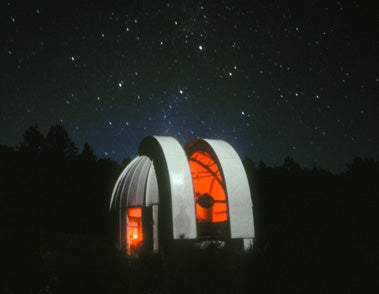A little south of Star Hill Inn, New Mexico Skies, located in Cloudcroft, NM, is another popular destination for amateurs. Run by Mike and Lynn Rice, the New Mexico Skies observatory resides atop Mount Joy in the state’s Sacramento Mountains. Find New Mexico Skies on the Internet at www.nmskies.com.
Moving one state to the west, Astronomical Adventures in Flagstaff, Arizona, offers not only clear, dark skies but also numerous geological, historical, and astronomical sites to explore nearby. It is located on a 90,000-acre cattle ranch just west of Meteor Crater and offers day trips in addition to nighttime observing. On the web, see www.astronomicaladventures.com.
Slightly east of Tucson is Skywatcher’s Inn, located in Benson, AZ. This bed-and-breakfast facility also operates Vega-Bray Observatory, which is accessible to visitors. Located on top of a small hill overlooking the San Pedro River Valley, the site also hosts a science museum, classroom, and planetarium. The online home of Skywatcher’s Inn is at www.skywatchersinn.com.
Further north, Jack and Alice Newton manage the Netwon Observatory Bed & Breakfast in Osoyoos, British Columbia. The Canadian site hosts guest observers from March to October, and the Newtons are also constructing a winter observing site in southeastern Arizona called Arizona Sky Village. To learn more about either of these destinations, visit www.jacknewton.com.
Finally, for those observers who want to experience a bit of professional astronomy, the Advanced Observing Program operated by Kitt Peak National Observatory (56 miles southwest of Tucson, AZ) may be your dream. Up to two people will be welcomed and assisted as guest observers and can experience observing and imaging for an entire night on the mountain. Sound interesting? See www.noao.edu/outreach/aop.










